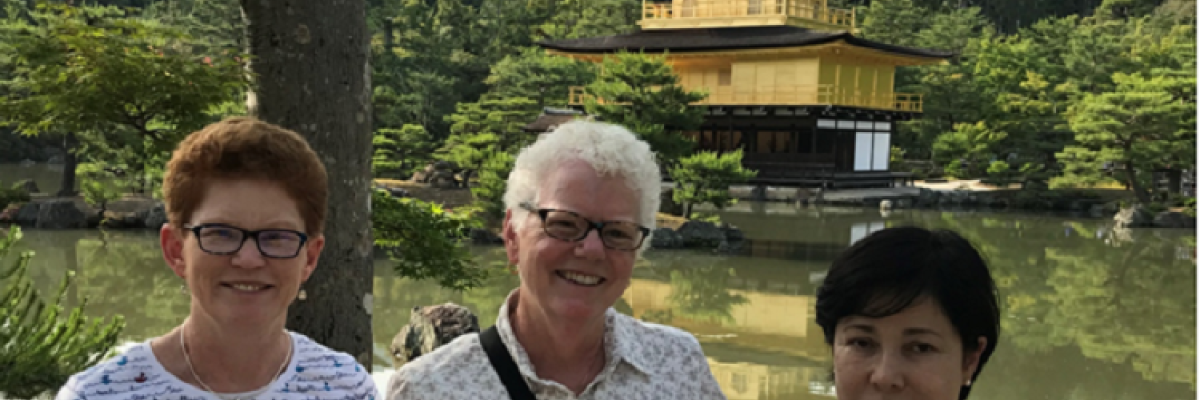Some people talk about having a “bucket list” of travel destinations. I’ve not determined such a list but I was able to take two “trips of a life-time” this summer. I went to Japan and then to Ireland. What a contrast in spirituality! A usual souvenir purchase for me is a cross for the wall in the church office. Easy to do in Ireland…not so easy in Japan.
Unlike any other country in the world, Japan is highly spiritual with a unique belief system. One of the most interesting things about Japanese religion is how no one preaches about it, yet it acts almost like a moral code, a way of living. The Japanese don't discuss religious matters on a day to day basis, nor do they frequently worship. Spirituality in Japan is primarily practiced during birth, marriage, death and matusuri (festivals). But there are shrines and temples galore! And always people stop for the briefest of a prayer. My little cousins in Kyoto are walked to school each morning by either their parents or grandparents. They always stop at one of the little shrines in the neighborhood to purify their hands and mouth and then make a prayer for a good day. It is daily ritual. They are Christian (only about 1% of the population) but they also take part in the major rituals of the indigenous religion.
Shinto and Buddhism are Japan's two major religions. Shinto is the basis of the Japanese spirituality and is considered the country's indigenous religion. Shinto is concerned with living in harmony with nature and living creatures. Everything in the natural world is a kami (god) and is respected. What a polite and generous culture.
As I write this, I have not yet embarked on my pilgrimage in Ireland (June 24-July 3). 50 years ago I joined a convent in South Dakota that was part of a congregation founded by an Irish nun in the 1700’s. I was invited on this special pilgrimage to visit Nano Nagel’s birthplace in County Cork on the 300th anniversary of her birth. Traveling through Ireland, as the ancient pilgrims would have, offers an excellent opportunity to experience one of the major themes of Celtic spirituality: the immanent presence of God, which means that God is everywhere.For Celtic Christians, God was a key part of all things natural and beautiful. The ancient Celts (not unlike the Japanese) worshiped pagan gods for nearly every natural setting, Celtic Christians praised God’s design and creation of all things natural. The hills, the sky, the sea, the forests were not God, but their spiritual qualities revealed God and were connected to God.
Places where people feel most strongly connected with God’s presence are referred to as “thin places.” It is in these places where the seen and unseen worlds are most closely connected and inhabitants of both worlds can momentarily touch the other. The land of Ireland is said to have endless “thin places.” I am looking forward to traveling in a country where every place is a place where it is possible to touch and be touched by God.
The Eastern and Western spiritualties seem so very different from each other, but at the core are so very similar. God is everywhere and we connect to our God in being aware of God’s presence in everything and everyone. And yes, I do have pictures!
Living in God’s most Grace,
Pastor Karen Marohn

